Are you publishing content consistently, but the traffic remains low and engagement is declining?
That’s most likely because…
- Your content isn’t aligned with what your audience is searching for
- It should be optimized for search engines
- Or maybe the content lacks the structure needed to drive conversions.
That’s where a content audit is needed. It helps you identify gaps and polish the existing content to ensure every piece contributes to your business goals.
What is a Content Audit?
Content audit is the systematic evaluation of all the content on a website or digital platform.
Its main purpose is to assess performance, relevance, and alignment with your current business goals through data gathered from landing pages, blog articles, and other assets.
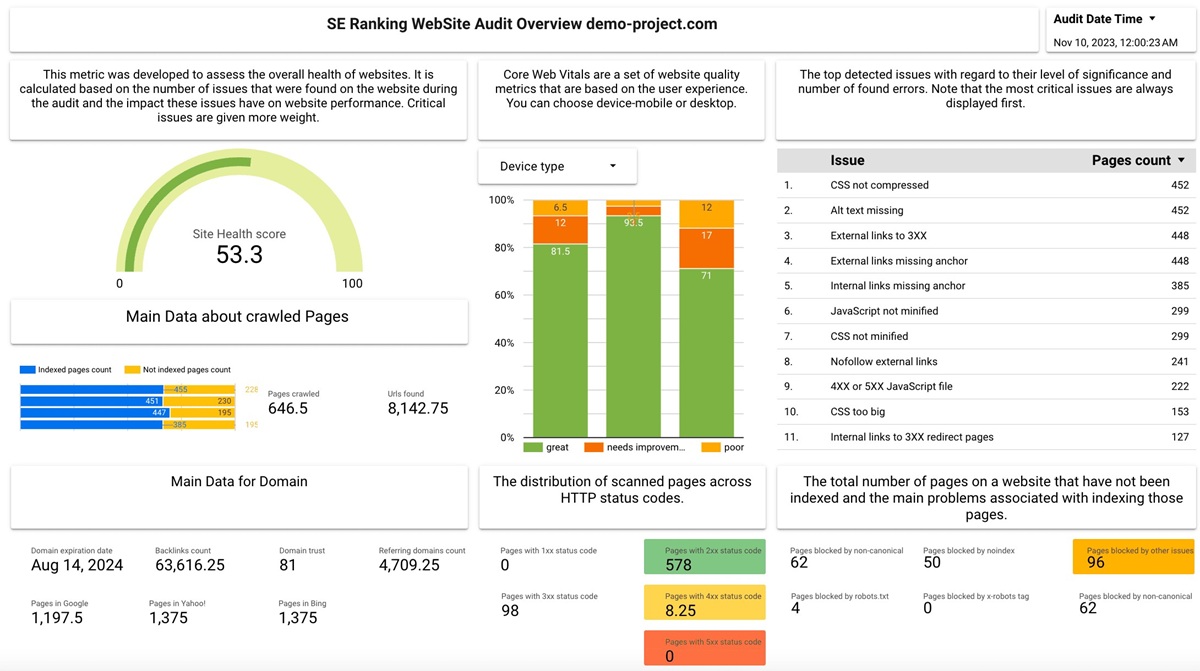
It will help you identify pieces of content that help you achieve your desired results (be that ranking in the top 3, driving sales, or increasing traffic) and create more of such. Deep audits also shed light on outdated or duplicate content that can harm your search presence.
Benefits of Content Audits
- SEO content audits are an inseparable part of any marketing strategy, providing a data-driven overview of on-page performance, including keyword optimization and highlighting areas for improvement.
- A content audit checklist helps businesses optimize existing content rather than constantly creating new material, maximizing content ROI.
- Identifying what works and what doesn’t enhances user experience. Your goal here is to evaluate content readability and formatting to create valuable and easy-to-navigate content.
Why is a Content Audit Critical?
It’s not a routine check but an essential process that allows businesses to remain relevant, discoverable, and impactful through online channels. Conducting consistent content audits is a classic example of integrating data analytics into digital marketing. The data gathered through in-depth analysis prepares a solid ground for alterations and revamped marketing strategies.
Staying relevant and impactful is easier when you have full visibility into your current content and how it’s performing. Without a structured audit process, businesses risk accumulating redundant, outdated, or low-performing content, which dilutes their messaging and weakens their brand authority.
An effective SEO content analysis pinpoints content gaps, allowing teams to refine their strategies based on actual performance data rather than assumptions.
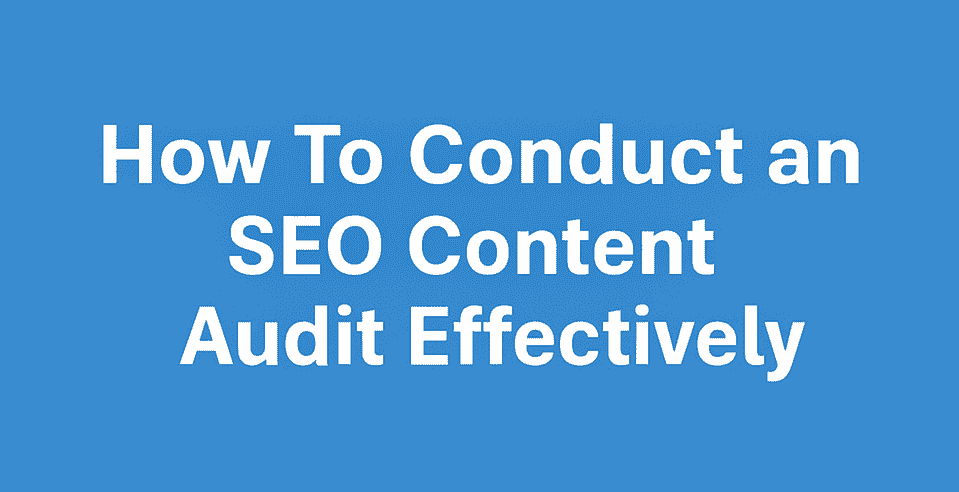
Define Your Goals and Scope
Before rolling up your sleeves, define clear objectives and establish the scope of your evaluation.
Try answering questions like:
- What’s my key goal with this audit? (e.g. Improved engagement, better rankings, or higher conversions)
- What are the key performance indicators (KPIs) to determine the success?
- Are there any outdated or low-performing pages that need immediate attention?
- How will content be categorized for analysis? (based on relevance, performance, or alignment with business goals)
- What tools and resources will be needed to streamline the audit process? (SEO tools, analytics platforms, content management systems)
Why Start With Clear Goals?
Clarifying these questions from the outset will provide direction and help structure the audit for maximum effectiveness. Knowing your goals upfront ensures no resources are spent in vain and that changes lead to tangible improvements.
Every business has unique content needs, but the most effective content audits typically revolve around three core goals:
Improve SEO Results
You can find the under/over-optimized pages and any technical SEO issues that hinder search rankings. As a result of a detailed audit, your next steps can be optimizing meta descriptions and titles, improving content structure, and addressing any duplicate or missing content for better indexing by search engines.
Increase Engagement
Engagement metrics like dwell time, bounce rates, and decreased social shares alert for content updates. This can be easily solved through better formatting, relevant visuals, or interactive elements. Enhancing readability and adding more value to content can also boost engagement.
Improve Conversion Rates
Analyzing CTAs, user pathways, and conversion rates pinpoints areas for improvement if your goal is to attract more targeted traffic to your website. Identify gaps in these areas to make the messaging stronger, place call-to-actions buttons in higher-intent locations, or introduce gated content for better lead generation.
Determine the Scope of Your Audit
The scope of an audit can vary depending on business priorities. A full-site content audit provides a broad evaluation of all content assets, making it ideal for businesses looking for comprehensive improvements.
Alternatively, a section-specific audit targets key areas such as blogs, landing pages, or product descriptions, allowing for a more focused and efficient optimization strategy. Businesses should choose the approach that best aligns with their current content goals and resources.
Pro Tip: Focus on aligning your content with your customer’s journey to deliver more value and improve conversions.
Essential Tools for a Successful Audit
Content audit tools directly impact the depth and accuracy of your audit insights. There are tools that focus solely on the technical aspects of the analysis, like tracking broken links, while others offer a more holistic approach, combining technical and user experience evaluation.
Content Inventory Tools
A content inventory is the beginning of any content marketing audit, as this is when you catalog and organize everything you have. Content inventory tools extract URLs, metadata, and other structural data to help you find, gather, and analyze content from multiple sources.
- Screaming Frog is an advanced website crawler that scans your entire site and extracts information like URLs, meta descriptions, word count, and broken links. It is often used to identify technical SEO issues and outdated content that may be hurting performance.
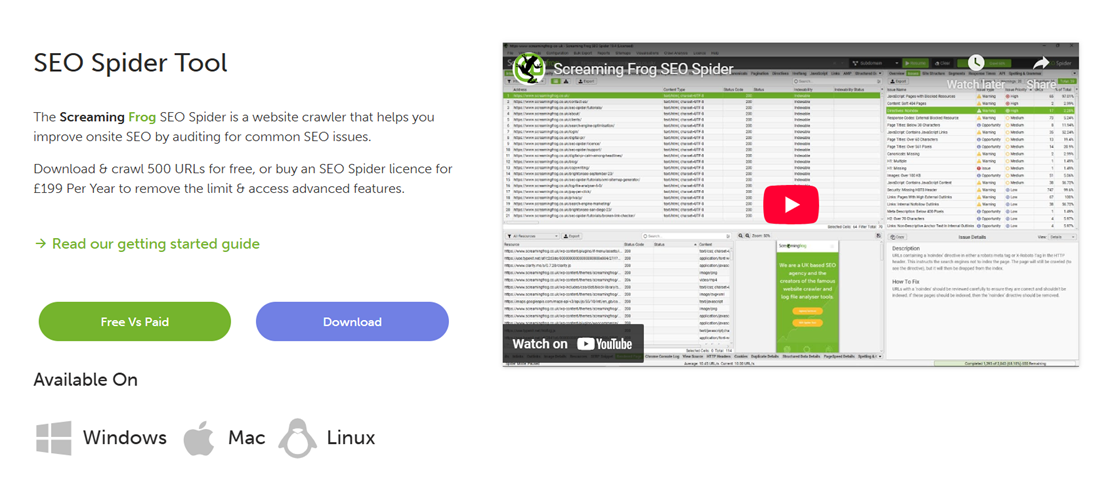
- XML Sitemap Extractors collect all of your URLs to ensure all pages are accounted for in the future audit. They help identify orphaned pages, broken links, and duplicates that may negatively impact SEO.
Analytics Platforms
To refine a content strategy, businesses need precise, real-time data on how users interact with their content. Analytics platforms provide deeper insights into key performance indicators that contribute to enhancing the customer journey and bringing more engagement. A detailed analysis of exit rates and organic VS paid traffic breakdowns is how you pinpoint areas for improvement and get the most out of your audit results.
- Google Analytics offers deep insights into user interactions, session durations, bounce rates, and traffic sources. Its Behavior Flow and Content Drilldown reports allow you to see exactly how visitors navigate through your website and identify pages that need improvement.

- Semrush is a comprehensive SEO and content marketing tool. It provides keyword rankings, competitor benchmarking, backlink profiles, and content audit reports, helping businesses refine their strategy.
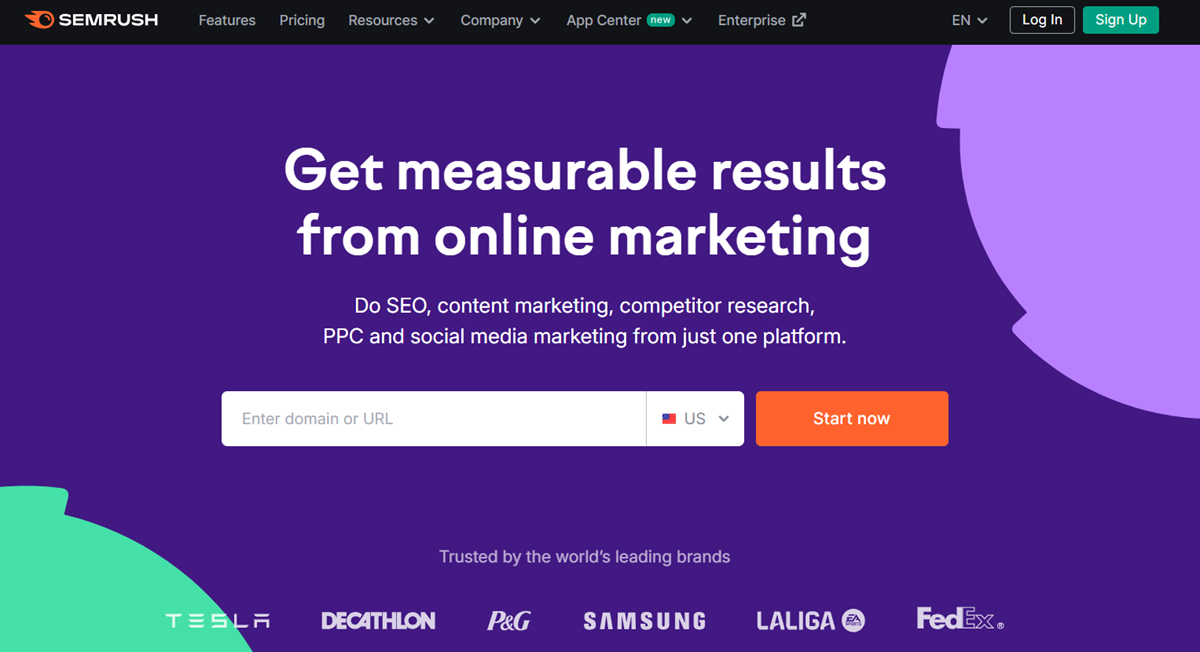
SEO Tools
Content audits should outline your website rankings through the search results and the ability to outrank competitors. The following tools are specifically designed for this purpose:
- Ahrefs is a leading SEO tool for tracking keywords, analyzing backlinks, and content performance. It also has an integrated AI content helper to put your audit insights into action.

- Moz provides domain authority tracking, page optimization recommendations, and detailed keyword analysis. Their Page Optimization Score helps users understand how well their content is structured for SEO and whether it needs additional alterations.
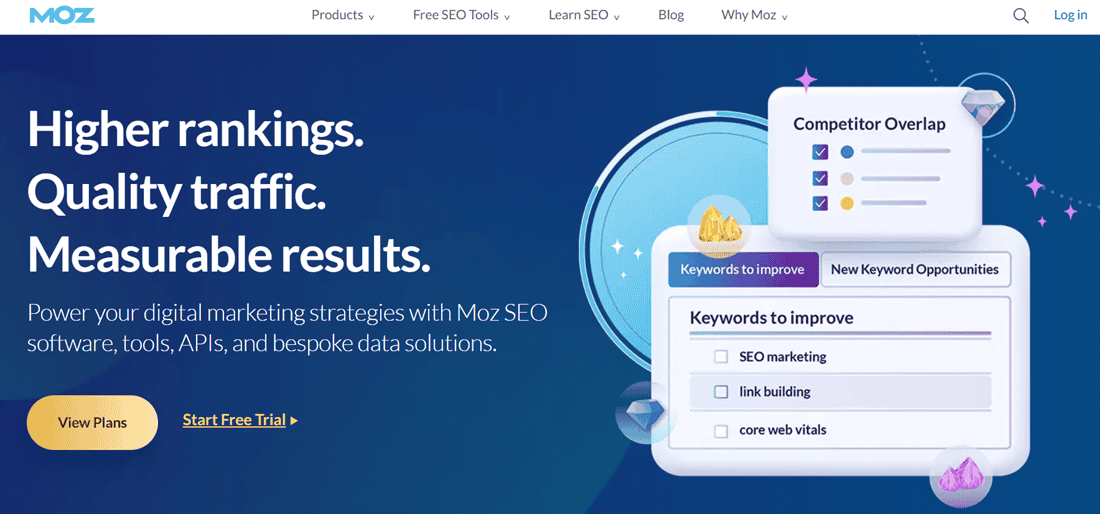
- Google Search Console is a free tool that monitors indexing issues, tracks search performance, and detects structured data errors. It can help you identify crawling issues, find duplicate meta tags, and learn about usability issues that could impact rankings.
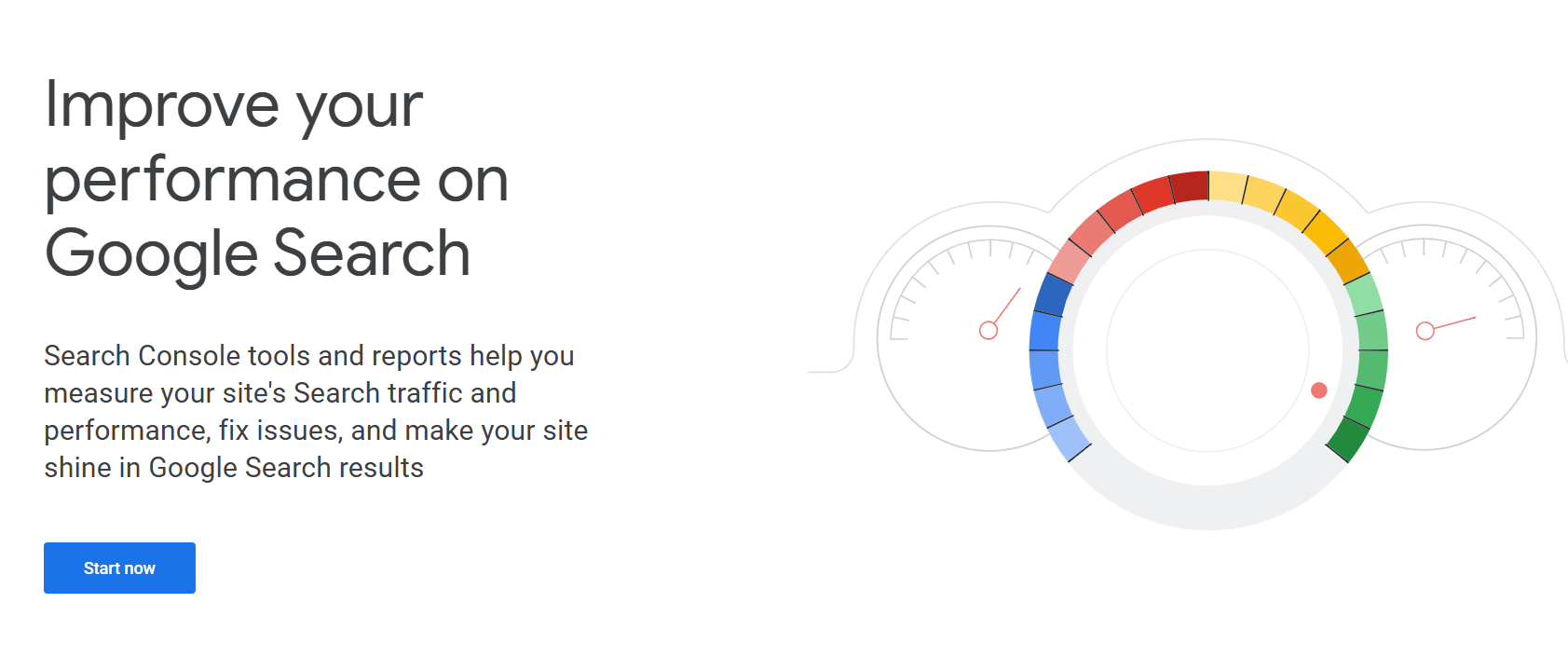
Content Management Systems
An audit checklist for content optimization often involves updating the existing content based on the insights. It’s easy to do so with a content management system (CMS) that offers user-friendly interfaces for content editing, formatting, and publishing. All you have to do is integrate a CMS to your website and start building content blocks with the integrated tools. The system will handle all the technical aspects. Some popular CMS options are:
- WordPress is a highly preferred CMS for content management, offering built-in SEO tools like Yoast SEO and Rank Math, which provide real-time on-page optimization suggestions. You can quickly update content with their ready-made templates, SEO plugins, and content structuring tools.

- HubSpot combines CRM and CMS functionalities, making it ideal for businesses focused on inbound marketing. It features smart content personalization, automated SEO recommendations, and detailed analytics, allowing you to fine-tune content for maximum engagement and conversions.
The List of Content Audit Tools
Each tool shared above has unique strengths and depending on the business’s needs, selecting the right combination can significantly improve audit efficiency and outcomes.
| Ahrefs Content Audit | A data-driven tool that analyzes keyword performance, backlinks, and content gaps to refine SEO strategies. |
| Conductor.com Content Audit | A comprehensive tool for large-scale enterprises that provides deep content insights, competitive analysis, and audience behavior tracking. |
| Screaming Frog | A technical SEO crawler that extracts website data, identifies errors and helps businesses structure their audits efficiently. |
| Moz Pro | Provides SEO metrics, on-page optimization suggestions, and rank tracking to improve content strategy. |
| ContentKing | A real-time SEO monitoring tool that continuously tracks content changes, indexing issues, and technical SEO performance. |
| Sitebulb | A visual audit tool that generates intuitive reports and insights on website structure, broken links, and content health. |
How to Set Up Your Workspace
Before diving into tons of data and analysis, setting up your digital workspace is essential for a smooth workflow. Since a content marketing audit involves tracking multiple performance indicators across different sources, using a centralized system will ensure efficiency and accuracy. Plus, keeping everything in a single place will make further data interpretation easier and more pleasant.
Start by creating a dedicated audit spreadsheet or dashboard where you will collect and organize data. This can include URLs, metadata, content types, performance metrics, and action items for each piece of content. Many prefer using tools like Google Sheets or Excel files for content inventory tracking, but a more dynamic approach like creating visual dashboards via Looker Studio (former Google Data Studio) can add interactiveness to the process.
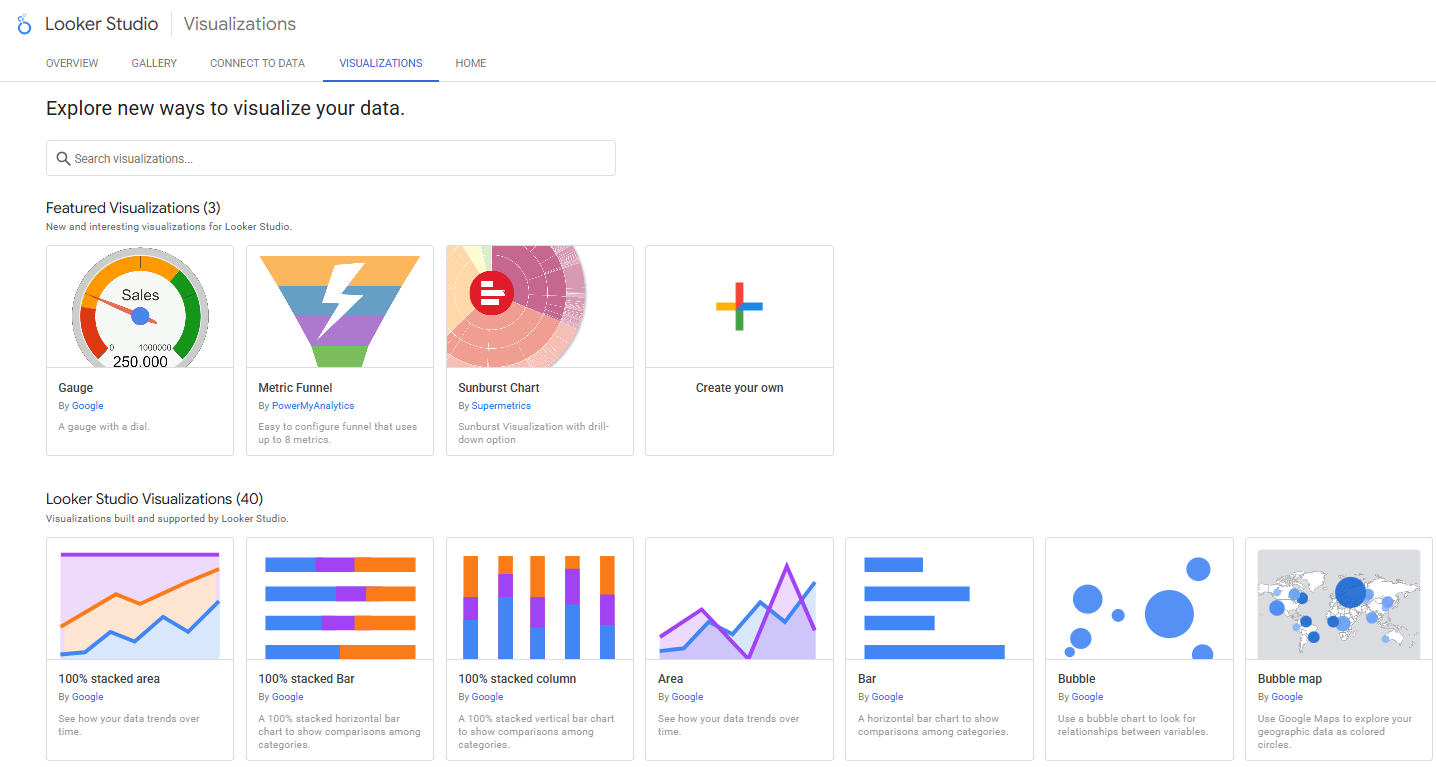
Once the workspace is set, define a standardized process for logging insights.
You can categorize content by performance, engagement, and SEO factors to ensure your system is intuitive and helps with the audit rather than making things more complicated.
Pro Tip: Use visual dashboards like Google Data Studio to track real-time performance metrics across multiple sources.
Step-by-Step Process for Conducting a Content Audit
If you want a successful outcome for your efforts, then prepare to develop a step-by-step routine for conducting a content audit. While exact steps may vary depending on your goals, resources, and industry requirements, a couple of key processes usually hold true.
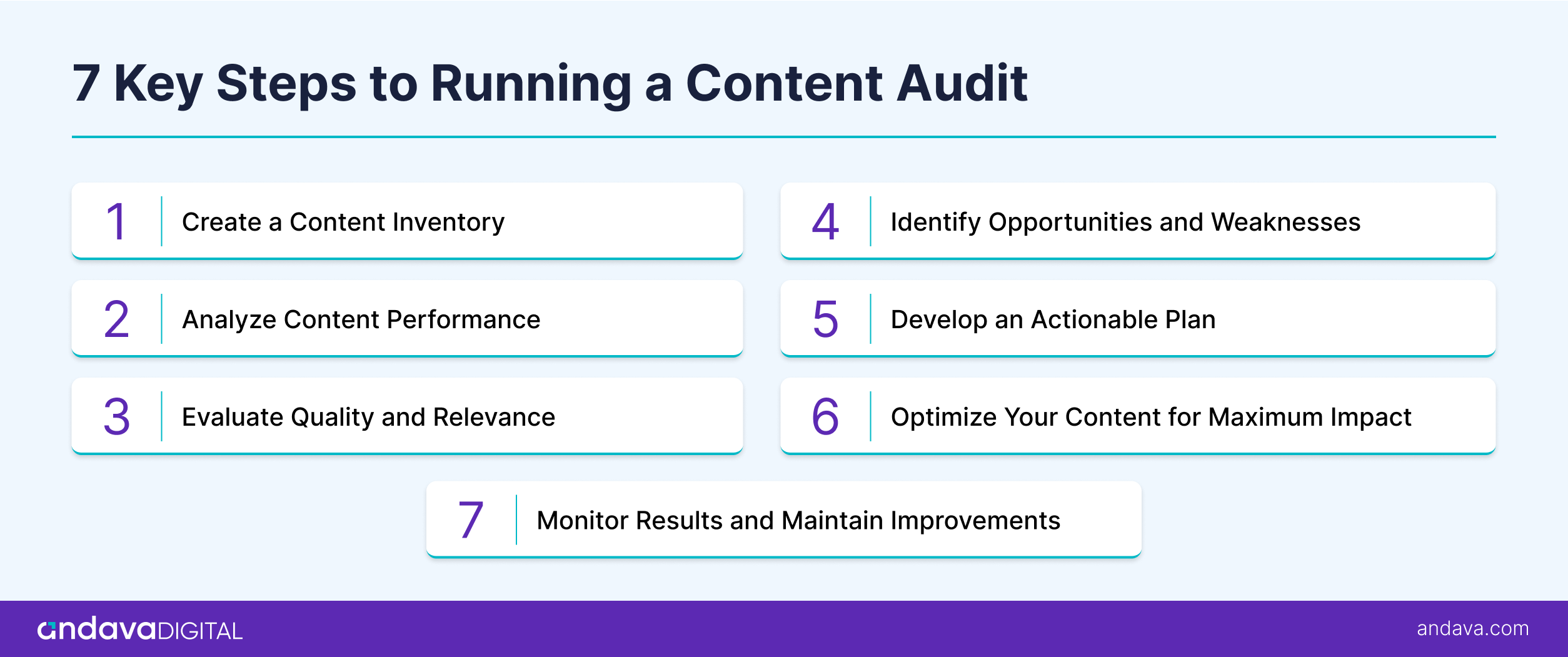
Step 1. Create a Content Inventory
Before analyzing content effectiveness, you need a comprehensive list of everything published on your website. A content inventory is essentially a database that organizes your pages, making it easier to assess performance and relevance. It lists all the details related to your content, like URLs, page titles, publishing dates, content types and formats, linked CTAs, etc.
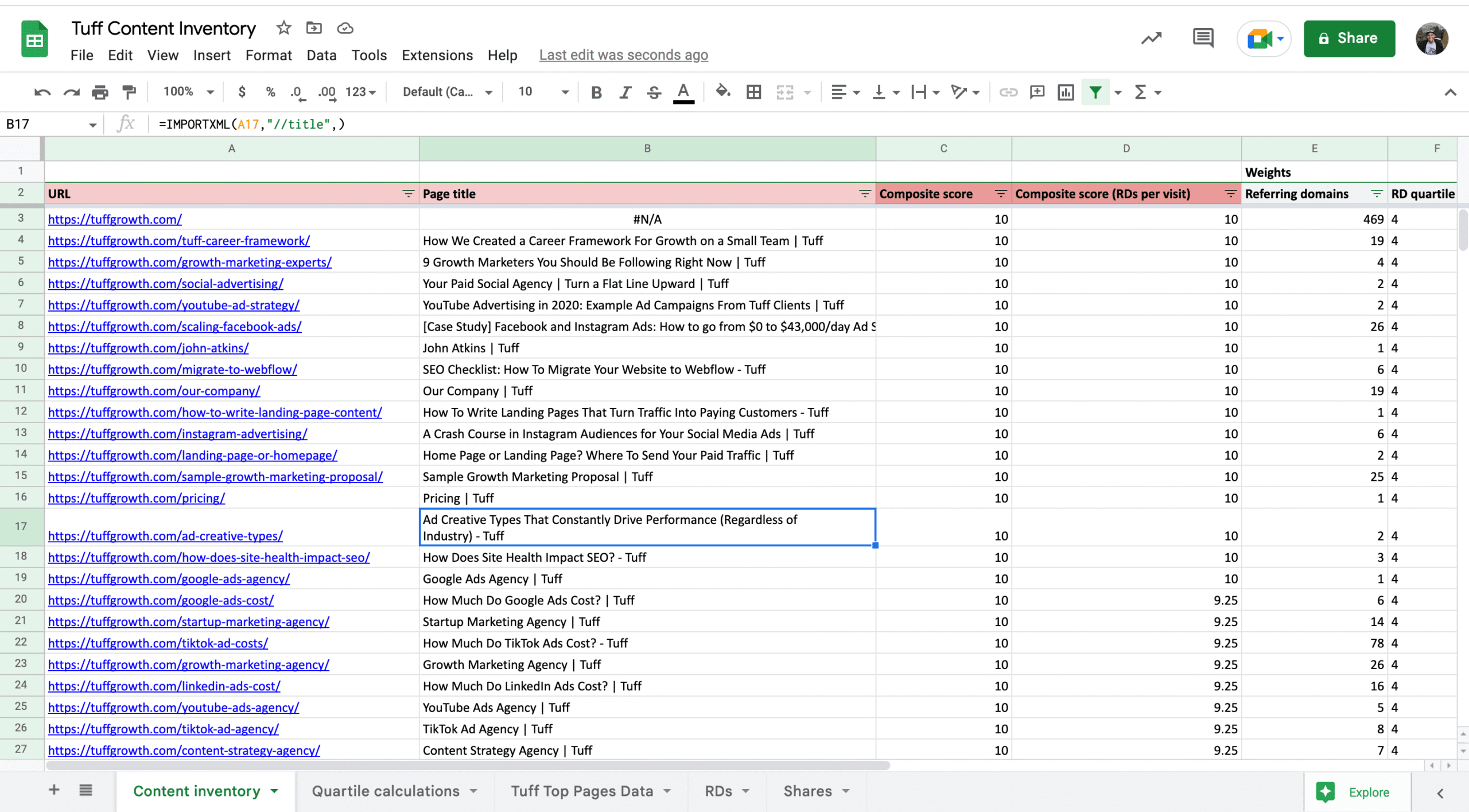
While gathering all this can be overwhelming and time-consuming, automation tools like Screaming Frog, Semrush, and Google Search Console can streamline the process. Here’s how a typical process looks like:
- Scan your website. Use a website crawler to extract URLs, metadata, internal links, and other structural details.
- Collect key content data. Record essential information like page titles, publish dates, content types, formats, word count, and linked CTAs.
- Analyze indexing and performance. Check which pages are indexed and track their traffic, engagement, and search visibility.
- Categorize content. Group pages based on performance, relevance, or update priority (e.g., keep, update, repurpose, remove).
- Organize in a spreadsheet or dashboard. Structure the data for easy review and future optimization.
Once your inventory is complete, review the data to spot outdated content, underperforming pages, and duplicate materials.
Step 2. Analyze Content Performance
This is when you start breaking down content effectiveness into key measurable factors:
- Traffic Metrics: Review website visits, bounce rates, and time spent on your landing pages to see if your content keeps users engaged or if they leave too soon.
- Engagement Metrics: Understand how users interact with your content. This suggests compiling shares, comments, and click-through rates to identify areas for improvement.
- SEO Data: Rankings, backlinks, and organic reach determine your content performance across the search engines. Tools like Ahrefs, Moz, and Google Search Console help track keyword positions and identify opportunities to optimize underperforming pages.
- Conversion Metrics: The ultimate measure of content success is its ability to convert visitors into leads or customers. Sign-ups, purchases, and goal completions indicate whether your content effectively drives action. If conversions are low, revisiting CTAs, refining messaging, or improving UX can help boost performance.
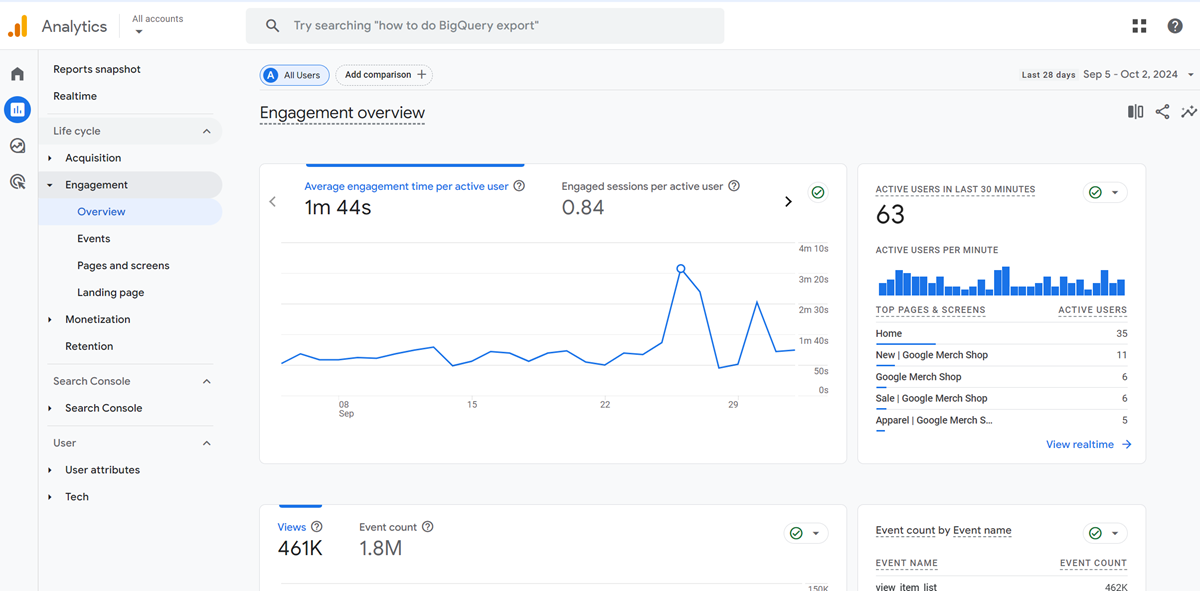
Step 3. Evaluate Quality and Relevance
Bet your content is valuable, accurate, and professional.
But it should also align with user expectations and ensure no outdated or inaccurate information creeps in. Here are a couple of things to help you:
- Check for irrelevant and duplicate content. Duplicate content is easy to identify, but irrelevant content can be more difficult to spot. Content becomes irrelevant when it no longer serves your audience’s search intent, is outdated due to industry changes, or doesn’t align with your business goals. Identifying and refreshing these pages keeps your site authoritative.
- Assess readability, formatting, and mobile compatibility. Content should be scannable and accessible across all devices, which means it must be easy to read and well-structured. Ensuring a logical content hierarchy with clear headings and mobile-friendly design enhances the user experience.
- Ensure alignment with audience needs and current trends. Content must resonate with your target audience. Reviewing feedback, search trends, and analytics ensures your content stays relevant.
- Ensure images and videos are relevant and of high high quality. Visual elements should support content goals. Optimizing alt text, file sizes, and placement improves SEO and accessibility.
- Check for outdated visuals that need replacement. Graphics should align with modern design trends and your brand identity. If your images look pixelated, contain old branding elements, or use outdated design styles, they may need an update.
- Confirm that visual content aligns with the brand and supports audience preferences. Ensuring consistency in design, tone, and messaging strengthens brand recognition.
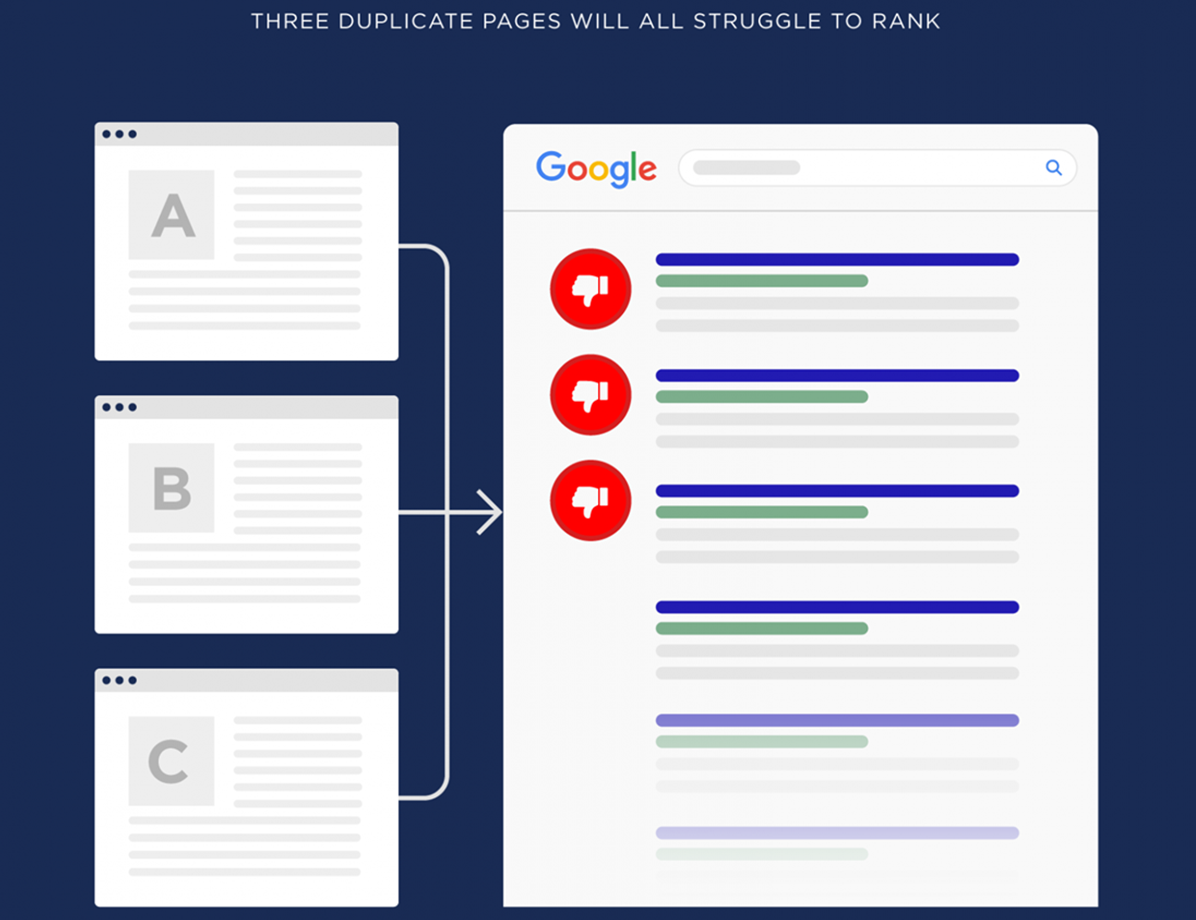
Step 4. Identify Opportunities and Weaknesses
Identify your best-performing pages that drive significant engagement, traffic, and conversions to enhance them further by updating keywords, refreshing visuals, and strengthening CTAs. Maximizing the potential of these high-impact pages ensures they continue to drive results while staying relevant to audience needs and search trends.
Pro Tip: Perform competitor analysis to find content gaps your competitors are filling but you aren’t.
Step 5. Develop an Actionable Plan and Set Benchmarks
Prioritize the most impactful changes first, like updating evergreen blog articles if the content is no longer relevant. The goal here isn’t to overhaul them but to fine-tune and enhance them so they maintain their momentum.
Next, tackle middle-performing pages to help them improve their performance. Some content might be getting moderate traffic or engagement, but it hasn’t reached its full potential. These pages often contain valuable insights but lack optimization to rank higher or captivate users effectively.

Finally, focus on low-performing pages that need a complete rework or removal. Doing this will significantly improve the overall site health and prevent search engines from indexing irrelevant content.
By organizing tasks, assigning responsibilities, and setting deadlines, teams can systematically enhance their digital assets for better performance.
To ensure a smooth execution, businesses should:
- Structure your plan for execution.
- Set realistic deadlines to keep the process structured and prevent content stagnation.
- Use project management tools to track progress.
- Set clear SEO benchmarks to know how the process is going to be tracked over time.
By combining a structured action plan with clearly defined content evaluation metrics, businesses can ensure their content audit process leads to long-term success and continuous optimization.
Pro Tip: Include user feedback and survey data to refine your content updates.
Step 6. Optimize Your Content for Maximum Impact
Effective content optimization requires a well-rounded approach to improve your technical SEO stats and user engagement. Small but impactful changes can make all the difference when you know where to focus.
- Improve meta descriptions and titles: Well-crafted meta tags improve click-through rates (CTR) by making search results more compelling and relevant to user intent. Include your keywords naturally and maintain readability for better rankings and higher engagement.
- Refine headings and keyword relevance: Keep the hierarchy with H1, H2, and H3 tags to help both readers and search engines understand your content while skimming through it.
- Update internal and external linking: Internal linking will improve your site navigation and boost SEO authority, while external links to credible sources further enhance trustworthiness and provide additional value to readers.
- Add visual breaks and interactive elements to enhance readability: Infographics, charts, quizzes, polls, and other dynamic content create a more immersive experience for the readers. This also encourages people to spend more time on the page, signaling value to search engines.
- Improve CTAs to guide users toward conversions: Whether it’s signing up for a newsletter or downloading a resource, having the right calls-to-action is how you influence people without sounding too salesy.
- Refresh outdated statistics and references: Ensuring content is backed by the latest research and industry trends improves trustworthiness and SEO rankings. Updating old data also signals to search engines that the page remains relevant.
Case Study: HubSpot’s Blog Refresh Project
A great example of how content optimization can lead to significant results comes from HubSpot’s blog refresh initiative. Realizing that many of their older blog posts were losing traffic due to outdated information and weaker engagement, the company decided to revamp its content strategy.
HubSpot updated 200 blog posts by:
- Adding new statistics and research-backed insights to increase credibility
- Enhancing CTAs to guide users toward lead-generation actions
- Including interactive visuals and infographics to improve engagement
The results were impressive. Within six months, HubSpot experienced a 45% increase in organic traffic and a 30% boost in lead generation. This case study highlights the power of consistent content audits and the importance of continuously optimizing existing assets to maintain search relevance and audience engagement.
Step 7. Monitor Results and Maintain Improvements
An effective content audit is not a one-time task. It requires ongoing monitoring to ensure continued success. We suggest you start tracking post-audit performance with tools like Looker Studio, Google Analytics, and Semrush that deliver reliable results of the expected improvements.
Resources by Andava Digital
Download Our Automated Content Audit Sheet
Learn How to Automate Content Audit Sheet
Creating a regular audit schedule can also help to stick to the routine and keep track of changes in performance over time. Establishing a quarterly or bi-annual content audit routine prevents outdated or irrelevant content from accumulating, ensuring your website remains fresh, engaging, and competitive.
Content audits are for those willing to dig into the very depths of their website and analyze every piece of content. They require patience, dedication, and a keen eye for detail. However, the results can be immensely beneficial to your overall content strategy and can lead to long-term success for your website.
Download our free Content Audit Checklist to ease your work and make the process more pleasant. This step-by-step guide will help you stay organized, track key insights, and ensure nothing gets overlooked.